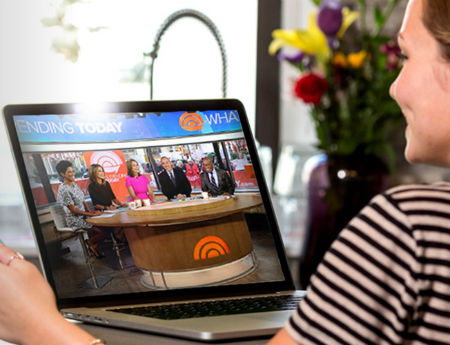Comcast: Stream TV Is Not ‘OTT’

It's déjà vu all over again.
As it did in 2012 when Comcast introduced a managed IP VOD app for the Xbox 360 that was exempt from the MSO's data usage policies for public high-speed Internet service at the time, the MSO found itself on the defensive again this week as it expanded the reach of Stream TV, its new skinny bundle, IPTV package for smartphones, tablets and PCs.
Some question whether Stream TV, a service for broadband-only customers tailored for so-called cord-cutters, violates network neutrality rules or puts other online video services at a disadvantage because the MSO’s new IP video offering is exempt from usage-based data policies that Comcast is testing in several markets.
As it argued three years ago about an app for the Xbox 360 that drew the ire of Netflix (Comcast pulled the plug on its Xbox 360 app earlier this year), the operator maintains that it’s well within the rules because the Stream TV service uses separately provisioned bandwidth to deliver the service to the home, and isn’t prioritizing traffic or delivering it “over-the-top” using bandwidth that’s set aside for its high-speed Internet services. In essence, Stream TV treats tablets, PCs and smartphones like a regular set-top box, but uses an IP path into the home (DOCSIS 3.0 modems are flexible in that some tuners can be used for regular high-speed Internet service, while others can be used for managed IP services, while still keeping the traffic from each approach separate).
It’s the same principle that Time Warner Cable and Charter Communications are using for their managed IPTV apps that are being delivered to Roku boxes. Similarly, AT&T dedicates separate IP capacity for its managed IPTV U-verse service to the home, and uses other capacity for its public high-speed Internet service.
"Stream TV is an in-home IP-cable service delivered over Comcast’s cable network, not over the public Internet,” Comcast said in a statement issued Thursday, the same day it launched Stream TV to its second market – Chicago. “IP-cable is not an ‘over-the-top’ streaming video service. Stream enables customers to enjoy their cable TV service on mobile devices in the home delivered over the managed cable network, without the need for additional equipment, like a traditional set-top-box.”
The FCC does address the idea in rules released in December 2014, which explain that “an entity that delivers cable services via IP is a cable operator to the extent it delivers those services as managed video services over its own facilities and within its footprint…IP-based service provided by a cable operator over its facilities and within its footprint must be regulated as a cable service not only because it is compelled by the statutory definitions; it is also good policy, as it ensures that cable operators will continue to be subject to the pro-competitive, consumer-focused regulations that apply to cable even if they provide their services via IP.”
Multichannel Newsletter
The smarter way to stay on top of the multichannel video marketplace. Sign up below.
Even outside of Comcast and Stream TV, streaming video policies continue to be a hot topic. T-Mobile’s “Binge On” offering gives mobile customers the option to stream video (at 480p resolution, optimized with a proprietary bandwidth system) from about two dozen content partners, including Sling TV and HBO, without it counting against their cellular data usage caps.
During that announcement, T-Mobile CEO John Legere held that Binge On is “completely in line” with the FCC’s network-neutrality rules, as no money changes hands, the program is available to any OTT provider, and that the feature is optional -- customers can turn it on or off.
FCC chairman Tom Wheeler weighed in on Binge On today, praising it as “highly innovative and highly competitive” and an offering that is within the bounds of the commission’s Open Internet order.
